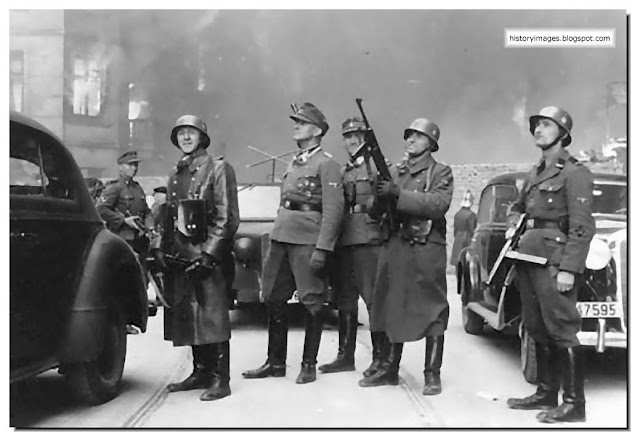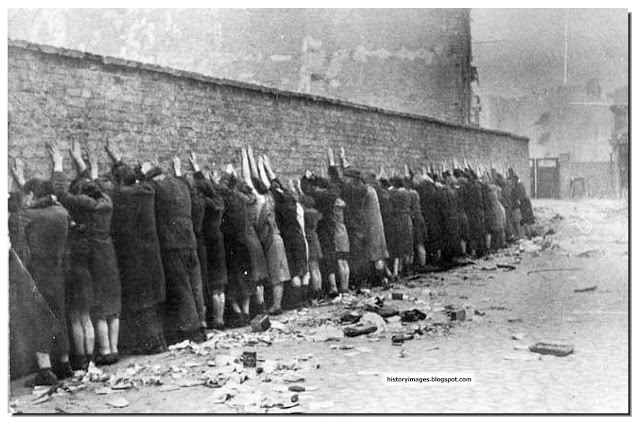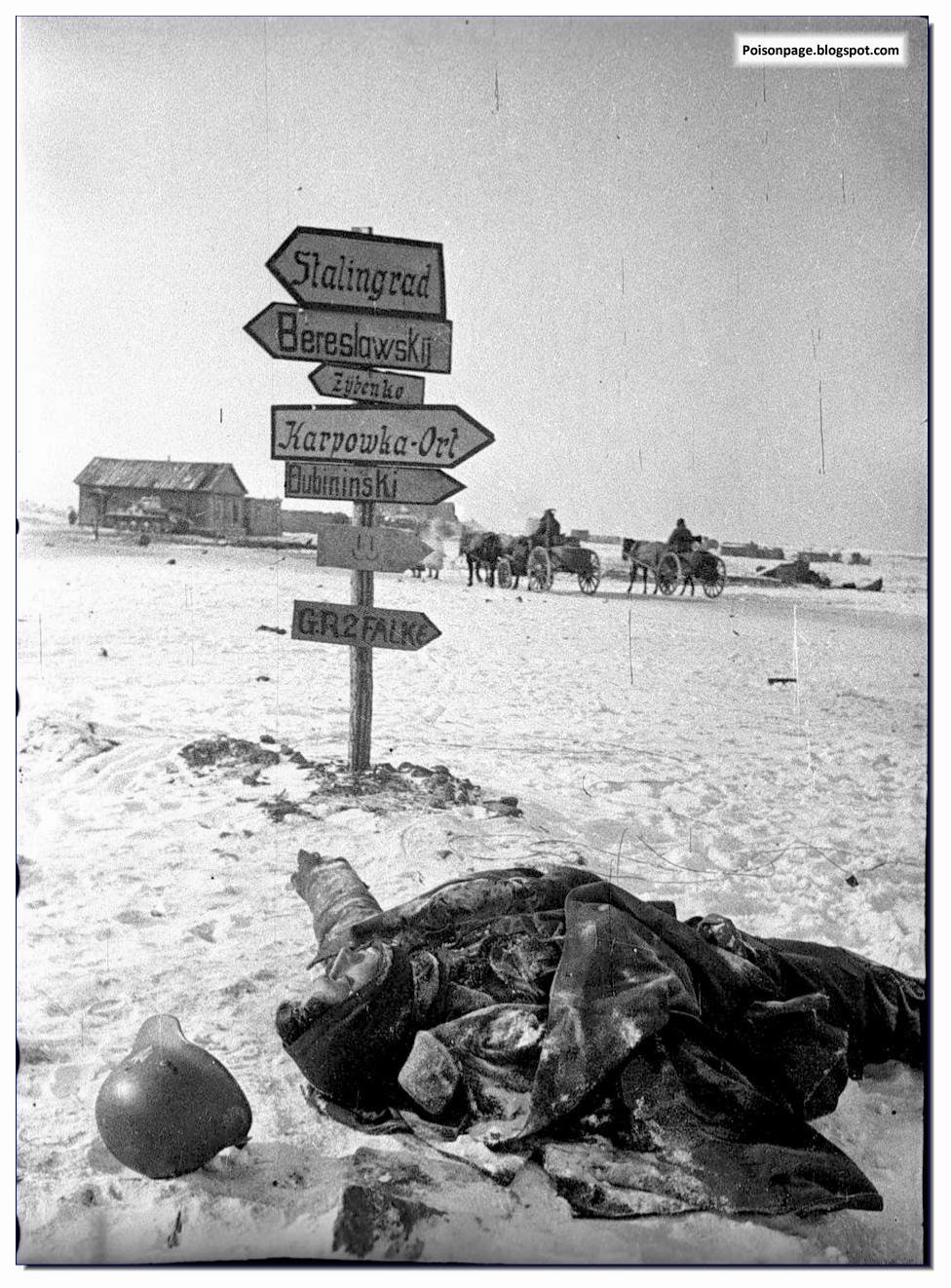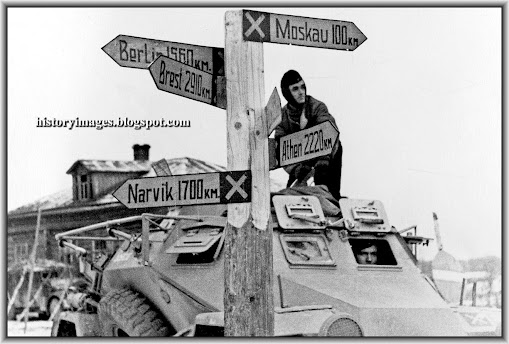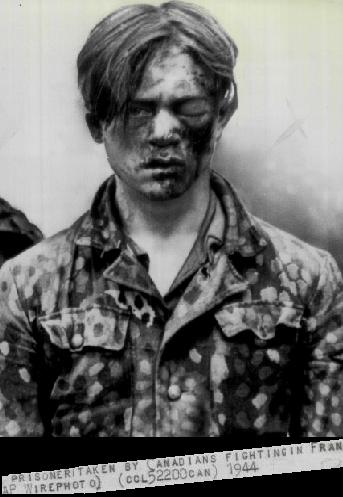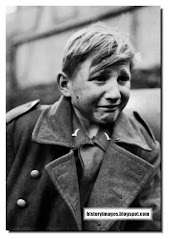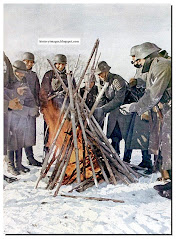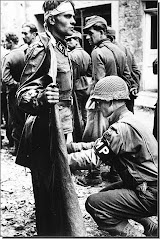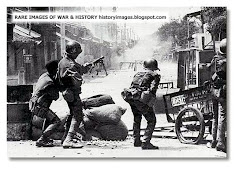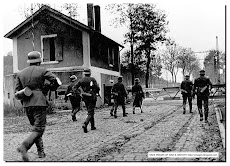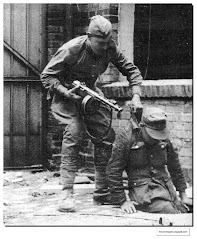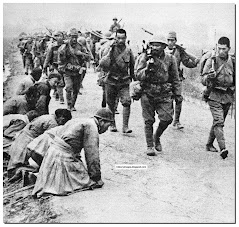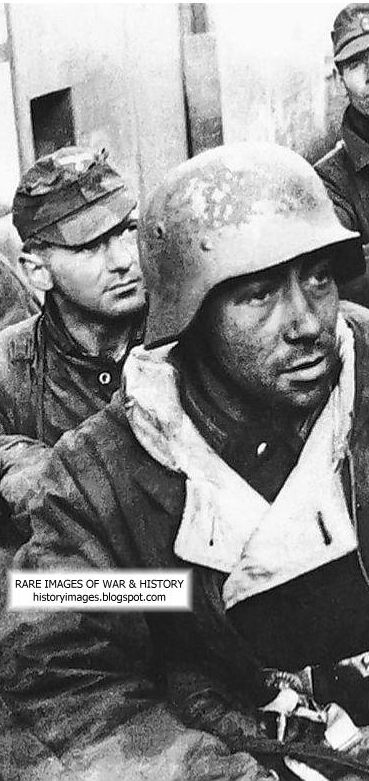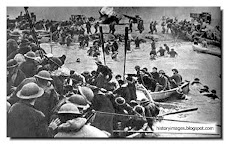The Warsaw Ghetto Uprising. 1943. Remarkable. Because the Jews who fought and died knew from the beginning that it was going to be a futile exercise.
It was the first time that there was any uprising against the Nazis.
It also showed that driven to desperation, the weakest (The Jews in the Ghetto had hardly any arms and no outside support; all they had was raw courage) will fight.
This resistance took Von Sammern by surprise, and he had to withdraw the German forces from the ghetto. He was replaced within hours as SSPF Warschau by Jürgen Stroop, SS- Brigadefuhrer and Generalmajor der Polizei, who was experienced in partisan warfare. Stroop had arrived in Warsaw a few days prior to the final liquidation, after being ordered by Himmler to replace Von Sammern, who according to Himmler was soft hearted. In the first three days, street battles took place in the ghetto. Stroop decided to systematically set fire to the buildings to flush out the fighters. This meant that the Jewish fighters had to abandon their positions and seek refuge in the bunkers.
The ghetto was now one great burning torch, enveloped in dense smoke and permeated by stifling odours. The temperatures in the underground bunkers below burning houses reached boiling point and as result most of the food was spoiled. The bunker dwellers had to quench their thirst by drinking warm and fetid water. The Jews refused to surrender to the Germans even though conditions in the underground bunkers were so terrible, breathing was difficult, and under cover of darkness they tried to escape from the burning bunkers to find other bunkers where conditions were better. In the second week of the uprising, the bunkers were the main focus of battle. In this fight the Germans had to struggle to eliminate each bunker. They used tear gas, poison gas and smoke candles, forcing the Jews to vacate their hiding places.
In many instances Jews kept firing as they emerged and a number of women fighters threw grenades hidden in their clothes, after they had surrendered. The Germans made the Jewish women strip naked, in order to avoid being ambushed in this manner. On 7 May 1943, the command bunker of the ZOB, at 18 Mila Street was discovered. It was attacked and opened on 8 May 1943, which according to Stroop contained 200 Jews. The command bunker had been attacked using smoke candles and explosives. When the bunker at 18 Mila Street was uncovered, its five exits were blocked, the main entrance was broken open, and canisters of poison gas were thrown inside.
Arie Wilner and Lolek Rotblat called on the fighters to take their own lives rather than surrender to the Germans. Some of the fighters did indeed commit suicide while others perished from the the gas, whilst a handful succeeded in taking shelter in one of the alcoves and later escaped via the sewer system to the “Aryan” side of Warsaw. Many of the leaders of the Jewish underground and architects of the last battle for Jewish Warsaw, including Mordechai Anielewicz the ZOB Leader of the revolt, fell in the bunker at 18 Mila Street.
On 16 May 1943 Stroop announced that the Großaktion had been completed and ended his daily reports to Kruger in Cracow with the following entries:
“The Jewish quarter of Warsaw is no more. The Grand operation terminated at 2015 hours when the Warsaw Synagogue was blown up”. "Now there are no enterprises left in the former Jewish quarter. Everything of value, the raw materials and machines have been transferred. The buildings and whatever else there was have been destroyed. The only exception is the so called Dzielna Prison of the Security Police, which was exempted from destruction."
Of the total 56,065 Jews apprehended, about 7,000 were destroyed directly in the course of the Großaktion, in the former Jewish quarter. 6929 were destroyed via transport to Tll (Treblinka ll death camp), whilst 15,000 went to KZ Lublin (Majdanek), and other labour camps such as Poniatowa and Trawniki. About 5.000 of the Jews deported to KZ Lublin (Majdanek) were immediately killed in the gas chambers after the initial selection.
The fighters surrender. Brave women.
The SS set entire buildings on fire to ferret out those hiding in there. The April 28 edition of the Voice of Warsaw (a publication of the Warsaw Committee of the Polish Workers' Party) reported, "The SS thugs set ablaze entire blocks of flats in order to force the population to come out of hiding...the water, gas, and electric supplies were cut off...."
SS assault troops capture two Jewish resistance fighters pulled from a bunker during the suppression of the Warsaw Ghetto Uprising.
Some of the Ghetto residents leave as German troops move in
Those captured during the Uprising
The SS wait as a Jew emerges from a bunker.
SS troops set fire on buildings. An image of doom, brutality straight from hell
Brave Jewish women captured during the Uprising
These are no brave soldiers. These are SS men killing innocent Jews during the Warsaw Ghetto Uprising
Jewish fighters lined up against the wall
The ruthless SS troops move in for the kill
The Germans used artillery to blast away buildings to flush out the fighters
Troops ready with a machine gun at an opening of the Warsaw Ghetto wall
Interrogating the captured
This German is mighty pleased with the day's work
The bad guy in charge of stamping out the Warsaw Ghetto Uprising. SS Major General Juergen Stroop (Second from left)
RUTHLESS STROOP
Jewish fighters lined up against the wall
The ruthless SS troops move in for the kill
The Germans used artillery to blast away buildings to flush out the fighters
Troops ready with a machine gun at an opening of the Warsaw Ghetto wall
Interrogating the captured
This German is mighty pleased with the day's work
The bad guy in charge of stamping out the Warsaw Ghetto Uprising. SS Major General Juergen Stroop (Second from left)
RUTHLESS STROOP
On the first day of the Warsaw ghetto uprising Stroop took over command of the German forces, replacing Dr Ferdinand von Sammern-Frankenegg, and he produced a detailed report of the operation to destroy the Jewish residential quarter.
Stroop recorded his deeds in a boastful seventy-five page report bound together in black pebble leather and including copies of all daily communiqués sent to Kruger – SS Police Leader East, as well as photographs with captions in Gothic script.
Former SS- Hauptsturmfuhrer Georg Michalsen, who was a member of Odilo Globocnik’s Aktion Reinhard staff, and had been sent to Warsaw to oversee the transfer of enterprises to the Lublin district, recalled his short time in Warsaw, serving under Stroop:
“The witness Max Jesuiter stated that Stroop had an outspoken hatred against Jews. If it had gone according to Stroop, not one train with Jews would have left Warsaw, but Stroop would have liquidated all Jews right there.” Michalsen – “I consider this description as valid. I also was under the impression that Stroop was negatively disposed towards a transfer of Jews and under the circumstances only bent to higher pressures. I also stated that it never happened before Stroop’s time that houses were burnt down. But as soon as Stroop arrived, and that was even on his first day, houses were set on fire. I have witnessed myself how people jumped from burning houses. Most probably they died.”
After the Ghetto Uprising, SS-Obergruppenfuhrer Friedrich- Wilhelm Kruger awarded an Iron Cross 1st Class to Stroop on 18 June 1943 for the action at a gala reception in Warsaw’s Lazienki Park.










